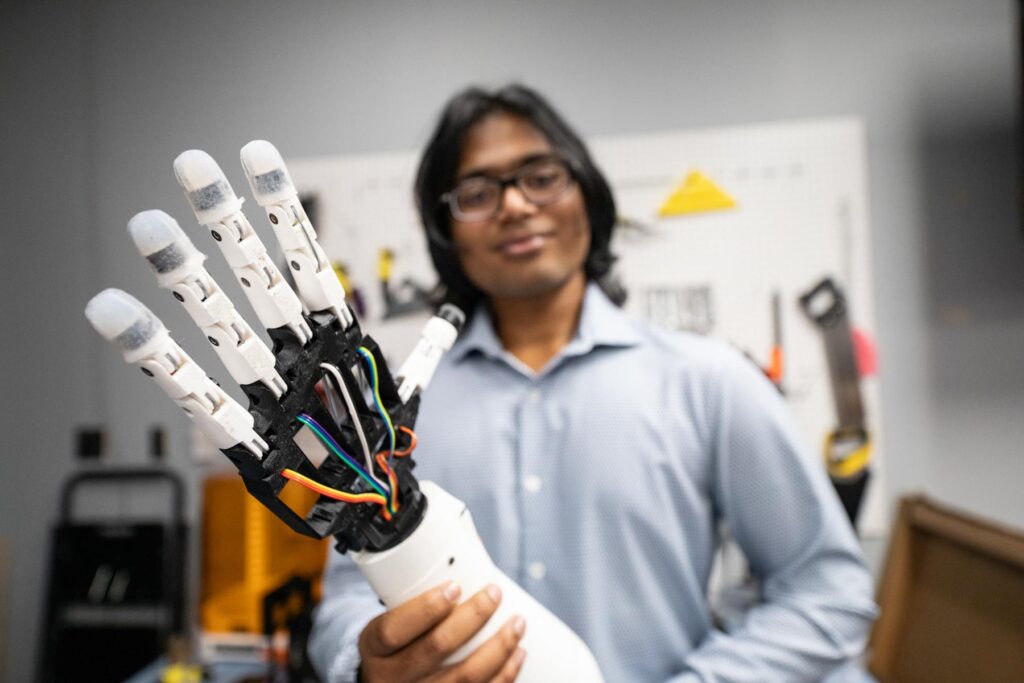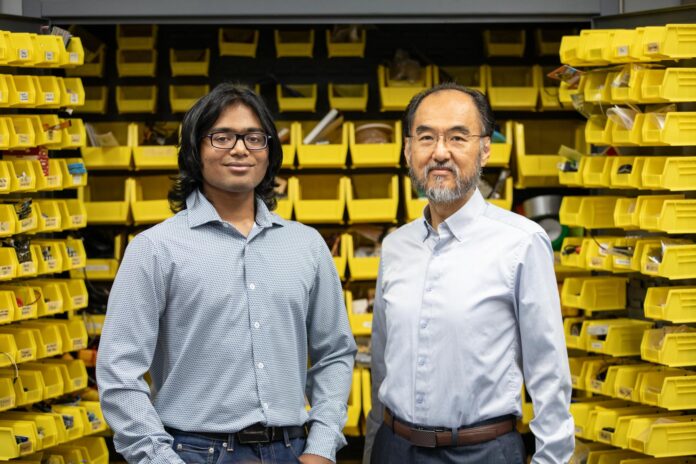Summer research project explores alternative machine learning framework
作者:Andrea Honaker
Mercer University rising sophomore Ayush Sahoo spent his summer developing a new machine learning framework that could be a game-changer for helping students better understand the complexities of this field.
Under the direction of Electrical and Computer Engineering Professor Dr. Anthony Choi, Sahoo began the project known as MLRust about six months ago and continued his work for 10 weeks this summer through the Mercer Undergraduate Research Scholar (MURS) Training Initiative.
Sahoo, a computer engineering major, approached Dr. Choi with the idea of creating a new tool in the Rust programming language that could serve as an alternative to popular machine learning platforms like TensorFlow and PyTorch. The goal was to give Mercer’s machine learning projects a faster and safer way to handle artificial intelligence tasks.
“I wanted to work on machine learning things, but I didn’t want to depend on Python. I wanted to do something of my own. I wanted to build something out of Rust to do what I wanted to do, and that’s where the original project started,” Sahoo said. “Rust is a low-level, high-performance language that guarantees memory safety.”
Dr. Choi said these capabilities make Rust a more stable option for programming as well as an ideal choice for teaching coding, since it allows users to more easily see the basics of how things work.
“Because of the way the Rust language is structured, we would be able to introduce the concepts of machine learning more simply to student researchers,” Dr. Choi said. “It allows for a deeper understanding without necessarily getting bogged down into too much of the technical details, and yet, it’s going to be compartmentalized in such a way that they get a better understanding of the components that get built into it.”
Sahoo built MLRust from the ground up, including making his own libraries of coding components rather than using pre-built libraries already in existence, which helped him gain a thorough grasp of the programming language’s capabilities.
“It’s not just he built a machine-learning framework; he actually built all the libraries preceding that as well. That is an amazing amount of work that has to take place to be able to do all that,” Dr. Choi said. “Basically, he has already built a proof of concept where we can actually develop small machine learning modules, small neural networks, and then be able to train it.”

In machine learning, computers are trained to learn from their experiences. A neural network — inspired by the structure of the human brain — consists of layers of interconnected neurons that process inputs. Through training, the network learns to recognize patterns in data and make predictions. This summer, Sahoo focused on adapting new libraries to allow for efficient organization and processing of data.
Right now, MLRust is at the small prototype stage, so the next step is to expand it into a full-scale, mature machine learning platform that can handle larger neural networks and more complex applications, Dr. Choi said.
As the system is built out, Mercer students will be able to get a well-organized look at machine learning mechanisms and how neural networks work. As a result, the AI systems they create in the future will be more robust, higher performing and better designed.
“We can actually take a student into a journey of not just being able to utilize an algorithm, but to actually open up the algorithm to see how the algorithm is actually running. That is something very exciting,” Dr. Choi said.
If MLRust becomes stable enough, it could eventually be used to power Mercer machine learning projects, such as the “Merbot” that Dr. Choi and a team of students, including Sahoo, are currently working on. They have started to build a humanoid robot, with each of the body parts 3D-printed and containing joints that can be articulated. The prototype for the hand has already been created, and the wrist, forearm, elbow, bicep and shoulder are next. Then, they will work on the computer systems to program the movement.
This project aligns with anticipated changes in the focus of artificial intelligence work. Currently, AI is all about large language models, such as ChatGPT and Gemini, but many experts expect the direction to shift to implementation and embedding of AI systems into physical robots, Dr. Choi said.
“You can see that we’re not just working on this random set of projects, but these projects actually have some cohesive flow overall within this vision of how we’re transitioning and staying current within the current research framework,” Dr. Choi said. “For me, I’m getting the pieces built to this grand vision that I have, but without these students working on these smaller projects, who are driven to build these subcomponents, I’d never even be able to dream about the big components.”

关于《Summer research project explores alternative machine learning framework》的评论
暂无评论
